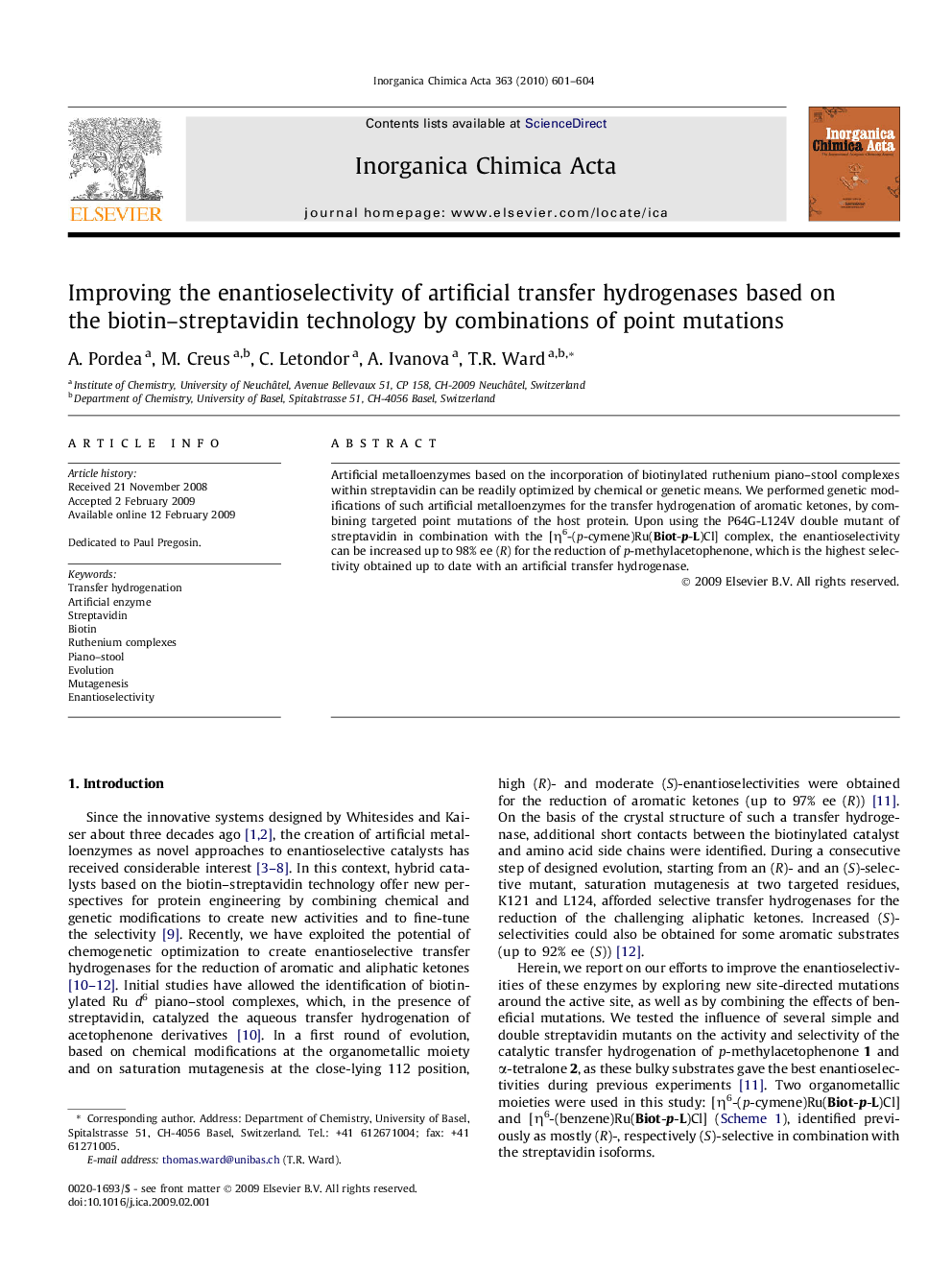| Article ID | Journal | Published Year | Pages | File Type |
|---|---|---|---|---|
| 1312657 | Inorganica Chimica Acta | 2010 | 4 Pages |
Artificial metalloenzymes based on the incorporation of biotinylated ruthenium piano–stool complexes within streptavidin can be readily optimized by chemical or genetic means. We performed genetic modifications of such artificial metalloenzymes for the transfer hydrogenation of aromatic ketones, by combining targeted point mutations of the host protein. Upon using the P64G-L124V double mutant of streptavidin in combination with the [η6-(p-cymene)Ru(Biot-p-L)Cl] complex, the enantioselectivity can be increased up to 98% ee (R) for the reduction of p-methylacetophenone, which is the highest selectivity obtained up to date with an artificial transfer hydrogenase.
Graphical abstractGenetic improvement by point mutations gave the highest selectivity obtained up to date with an artificial transfer hydrogenase based on avidin–biotin technology: up to 98% ee (R) for the reduction of p-methylacetophenone.Figure optionsDownload full-size imageDownload as PowerPoint slide
